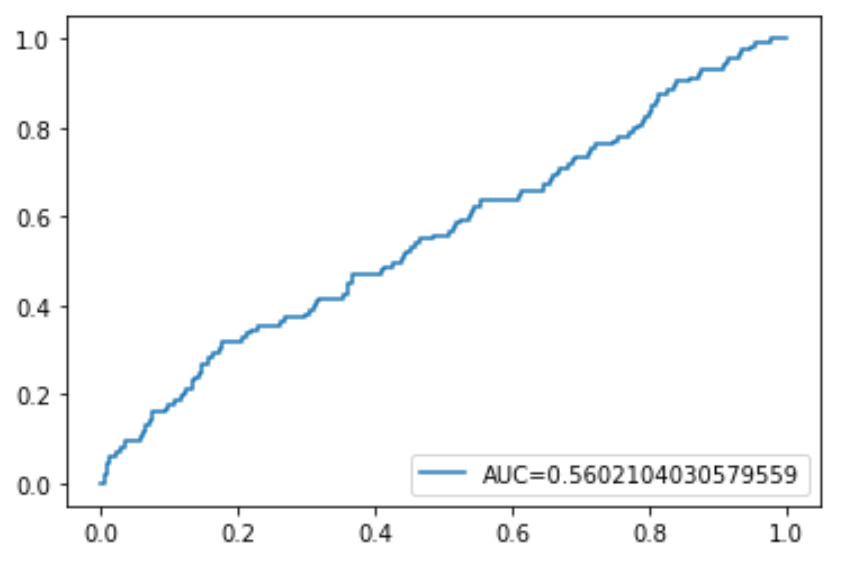Logistic regression is a method we can use to fit a regression model when the response variable is binary.
Logistic regression uses a method known as maximum likelihood estimation to find an equation of the following form:
log[p(X) / (1-p(X))] = β0 + β1X1 + β2X2 + … + βpXp
where:
- Xj: The jth predictor variable
- βj: The coefficient estimate for the jth predictor variable
The formula on the right side of the equation predicts the log odds of the response variable taking on a value of 1.
Thus, when we fit a logistic regression model we can use the following equation to calculate the probability that a given observation takes on a value of 1:
p(X) = eβ0 + β1X1 + β2X2 + … + βpXp / (1 + eβ0 + β1X1 + β2X2 + … + βpXp)
We then use some probability threshold to classify the observation as either 1 or 0.
For example, we might say that observations with a probability greater than or equal to 0.5 will be classified as “1” and all other observations will be classified as “0.”
This tutorial provides a step-by-step example of how to perform logistic regression in R.
Step 1: Import Necessary Packages
First, we’ll import the necessary packages to perform logistic regression in Python:
import pandas as pd import numpy as np from sklearn.model_selection import train_test_split from sklearn.linear_model import LogisticRegression from sklearn import metrics import matplotlib.pyplot as plt
Step 2: Load the Data
For this example, we’ll use the Default dataset from the Introduction to Statistical Learning book. We can use the following code to load and view a summary of the dataset:
#import dataset from CSV file on Github url = "https://raw.githubusercontent.com/Statology/Python-Guides/main/default.csv" data = pd.read_csv(url) #view first six rows of dataset data[0:6] default student balance income 0 0 0 729.526495 44361.625074 1 0 1 817.180407 12106.134700 2 0 0 1073.549164 31767.138947 3 0 0 529.250605 35704.493935 4 0 0 785.655883 38463.495879 5 0 1 919.588530 7491.558572 #find total observations in dataset len(data.index) 10000
This dataset contains the following information about 10,000 individuals:
- default: Indicates whether or not an individual defaulted.
- student: Indicates whether or not an individual is a student.
- balance: Average balance carried by an individual.
- income: Income of the individual.
We will use student status, bank balance, and income to build a logistic regression model that predicts the probability that a given individual defaults.
Step 3: Create Training and Test Samples
Next, we’ll split the dataset into a training set to train the model on and a testing set to test the model on.
#define the predictor variables and the response variable X = data[['student', 'balance', 'income']] y = data['default'] #split the dataset into training (70%) and testing (30%) sets X_train,X_test,y_train,y_test = train_test_split(X,y,test_size=0.3,random_state=0)
Step 4: Fit the Logistic Regression Model
Next, we’ll use the LogisticRegression() function to fit a logistic regression model to the dataset:
#instantiate the model log_regression = LogisticRegression() #fit the model using the training data log_regression.fit(X_train,y_train) #use model to make predictions on test data y_pred = log_regression.predict(X_test)
Step 5: Model Diagnostics
Once we fit the regression model, we can then analyze how well our model performs on the test dataset.
First, we’ll create the confusion matrix for the model:
cnf_matrix = metrics.confusion_matrix(y_test, y_pred)
cnf_matrix
array([[2886, 1],
[ 113, 0]])
From the confusion matrix we can see that:
- #True positive predictions: 2886
- #True negative predictions: 0
- #False positive predictions: 113
- #False negative predictions: 1
We can also obtain the accuracy of the model, which tells us the percentage of correction predictions the model made:
print("Accuracy:",metrics.accuracy_score(y_test, y_pred))l
Accuracy: 0.962
This tells us that the model made the correct prediction for whether or not an individual would default 96.2% of the time.
Lastly, we can plot the ROC (Receiver Operating Characteristic) Curve which displays the percentage of true positives predicted by the model as the prediction probability cutoff is lowered from 1 to 0.
The higher the AUC (area under the curve), the more accurately our model is able to predict outcomes:
#define metrics
y_pred_proba = log_regression.predict_proba(X_test)[::,1]
fpr, tpr, _ = metrics.roc_curve(y_test, y_pred_proba)
auc = metrics.roc_auc_score(y_test, y_pred_proba)
#create ROC curve
plt.plot(fpr,tpr,label="AUC="+str(auc))
plt.legend(loc=4)
plt.show()
The complete Python code used in this tutorial can be found here.

